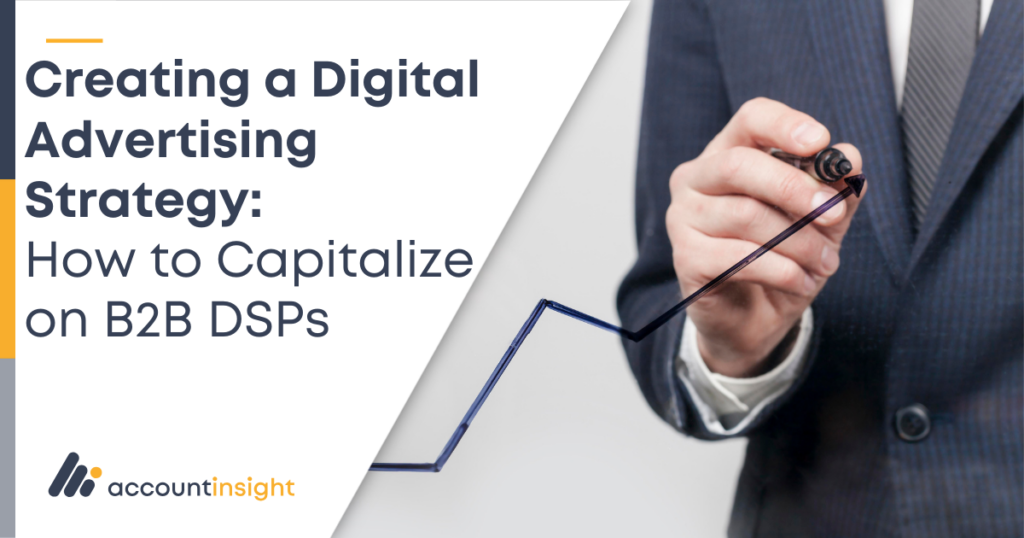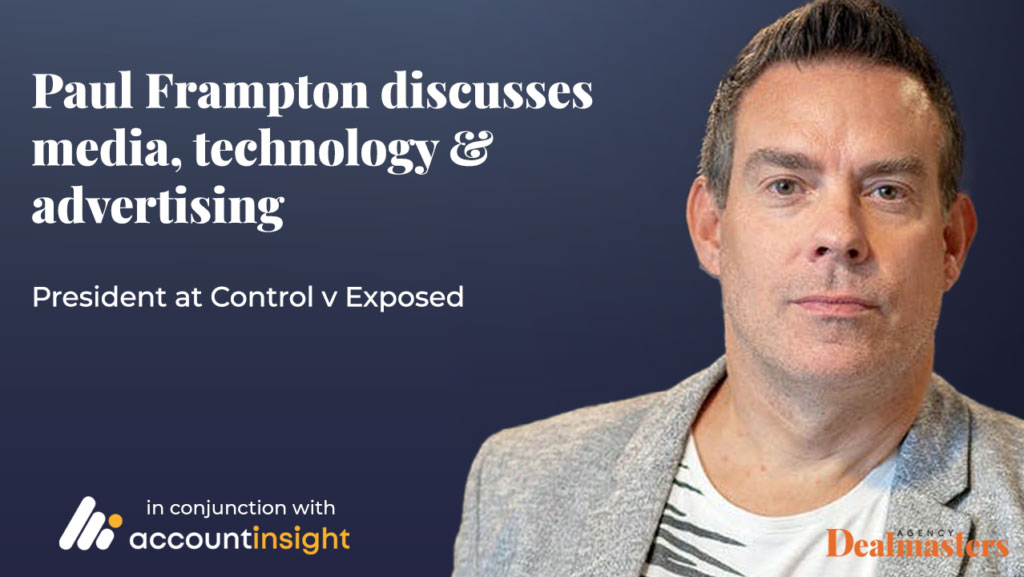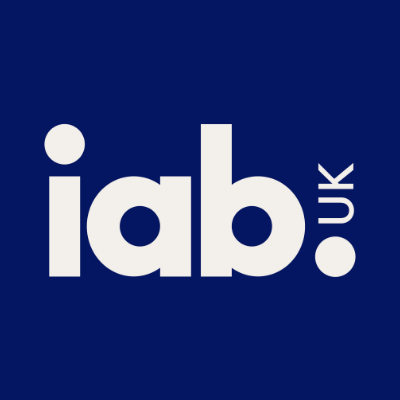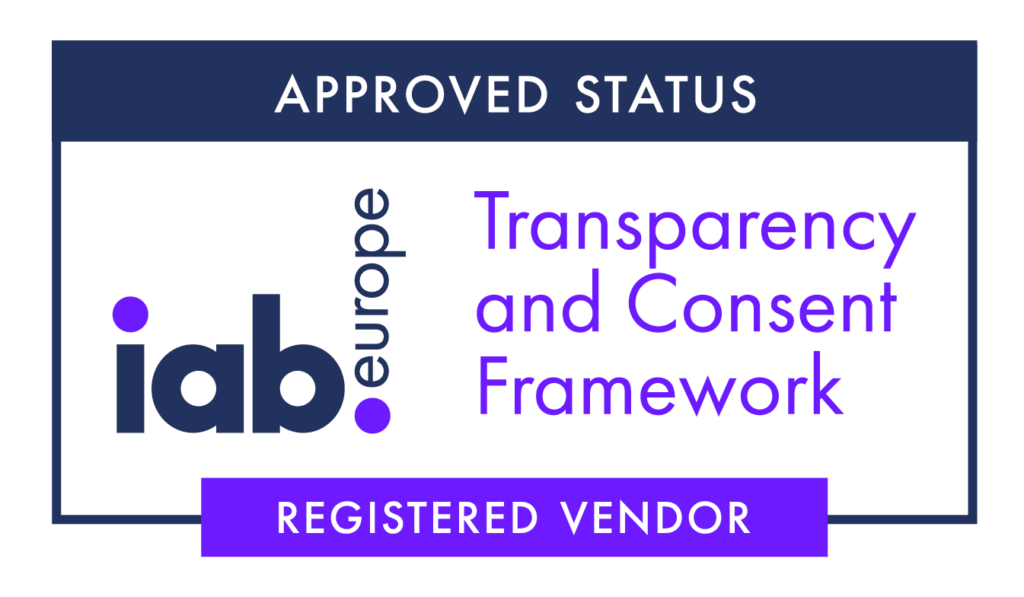The strategies that deliver results are the ones that capture attention, engage audiences, and drive conversions.
If we all agree on the basics, why is it that the B2B tactics we know and love — content, email, SEO etc. — aren’t working as well as they used to? There are basically 2 reasons:
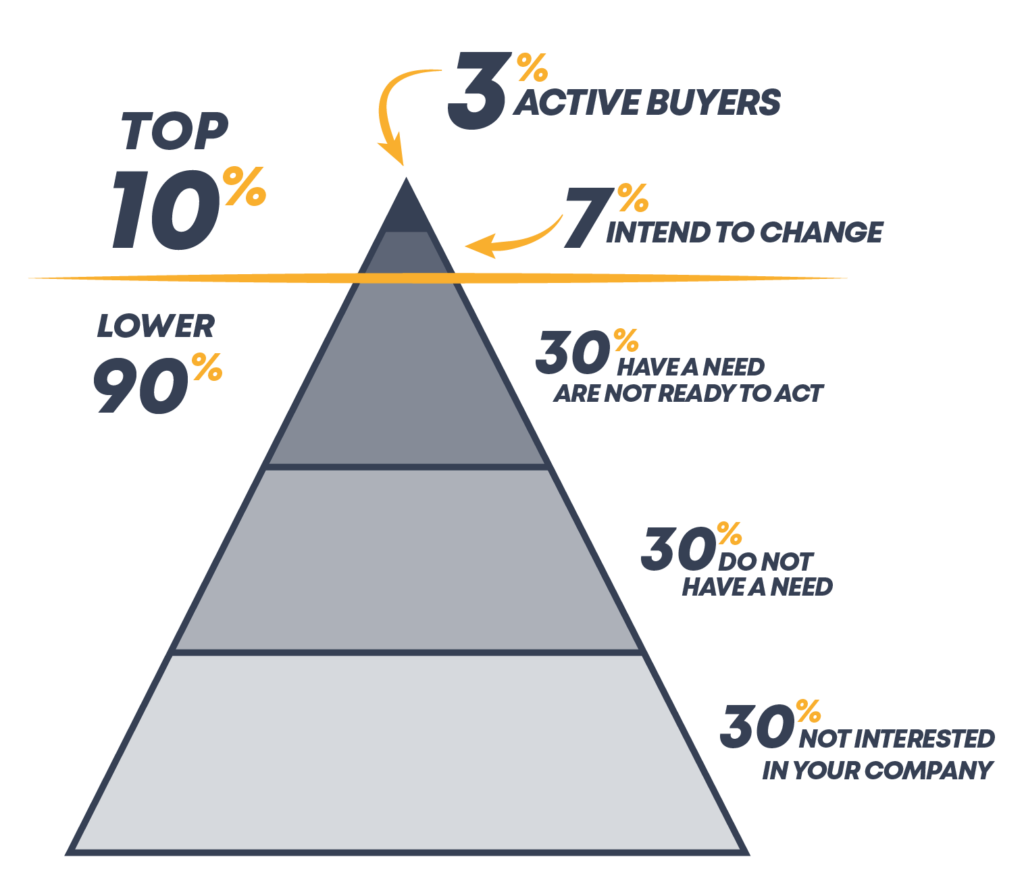
- Under-Investment in Brand: The focus on measurable demand capture over brand building means we all end up fighting over the same 3% to 10% of companies that are in-market, as opposed to creating demand with the other 97% to 90%.
- Buyers distrust at worse and indifference at best: years of eBook promotions, nurturing emails, social posts, and SDR outreach have numbed buyers to the traditional tactics, and our buyers are staying unknown and anonymous for longer.
Here are just a few of the compelling reasons why B2B display advertising matters and why B2B teams should integrate it into their clients’ marketing campaigns.
1. A World of Targeted Precision
B2B display advertising brings laser-focused targeting to the forefront. B2B teams can harness detailed data to create campaigns that directly connect with decision-makers, industry professionals, and key stakeholders. By delivering tailored messages to the right audience, B2B teams increase the chances of sparking meaningful engagements that lead to conversions.
2. Stepping into the Limelight
At its core, B2B display advertising is about more than immediate conversions. It’s a potent tool for building brand awareness and recognition within the industry.
3. Seamless Omni-Presence
The aability to design a cohesive strategy that weaves together display ads with other tactics like content marketing and email campaigns enables B2B teams to create an immersive and engaging experience for the audience, resulting in a seamless buyer’s journey.
4. Data-Driven Insights
B2B advertising platforms offer a treasure trove of data and analytics that empower B2B teams to measure campaign effectiveness in near real time. This data-driven approach ensures campaigns stay relevant and optimised, yielding better outcomes for clients.
5. Remarketing: Bringing Lost Opportunities Back
The potential of remarketing within B2B display advertising cannot be underestimated. B2B teams can re-engage users who’ve previously interacted with their clients’ websites or content. By targeting these warm leads, teams can rekindle interest and guide potential clients back into the sales funnel, resulting in heightened conversions and stronger customer relationships.
In sum, with its precise targeting, brand-building prowess, omni-channel reach, data-driven insights, personalized messaging, and effective remarketing capabilities, B2B teams have the chance to transform their clients’ B2B marketing landscape.
Why B2C Display Advertising is Generally Considered Inefficient When Targeting a B2B Audience
B2C display advertising, while effective for consumer-oriented campaigns, is often ill-suited for targeting a B2B audience. The divergent nature of decision-making, purchasing factors and information needs in the B2B sphere renders B2C tactics relatively ineffective. B2B decision-makers demand data-driven, value-focused messaging, which contrasts with the emotional appeals more suited to B2C campaigns.
This makes choosing the right tools and strategies of utmost importance. While Demand-Side Platforms (DSPs) have proven their worth in the B2C arena, they often fall short when it comes to targeting B2B audiences. Using a B2C DSP for B2B campaigns can result in inefficiencies and missed opportunities such as:
1. Audience Mismatch
One of the primary reasons why a B2C DSP is ill-suited for B2B campaigns lies in the audience mismatch. As example, whereas a B2B audience can target all architects in the country, this is a huge wasted effort if your B2B solution is only valid for the top 100 companies in the segment. As such B2C DSP’s audience segmentation and targeting mechanisms will not align with the nuanced criteria required to effectively reach and engage B2B audiences.
2. Lack of Contextual Relevance
B2B marketing thrives on contextual relevance and industry-specific knowledge. B2C DSPs may not adequately capture the intricacies of the B2B landscape, resulting in ads that lack the targeting and context that resonate with B2B decision-makers. The absence of this contextual relevance can lead to disengagement and reduced effectiveness.
3. Longer Sales Cycles and Multi-Decision-Maker Dynamics
B2B purchasing decisions involve longer sales cycles and often require the consensus of multiple decision-makers. B2C DSPs, which focus on quick conversions and individual consumers, may not align with the gradual nurturing and complex decision-making processes of B2B audiences. This mismatch can lead to misaligned strategies and missed opportunities. Whereas B2C has a focus on high CTR and low CPC, on a B2B context you need to look for engaged pipeline, incrementa web visits and individual company engagement.
4. Lack of Account-Based Marketing (ABM) Capabilities
Account-Based Marketing (ABM) is a critical strategy in B2B campaigns, enabling personalised engagement with high-value accounts. B2C DSPs are typically designed for mass targeting and lack the advanced ABM capabilities necessary to tailor campaigns to specific accounts, industries, and key stakeholders.
Factors to Consider When Choosing a B2B Display DSP
Selecting the right Demand-Side Platform (DSP) is pivotal for a successful B2B display advertising campaign. Consider factors such as precise targeting capabilities, integration with B2B platforms, access to industry-specific publishers, and the ability to track and measure ROI.
Frequently Asked Questions Relating to B2B Display Advertising and Choosing a B2B DSP
Q: Is B2B display advertising only suitable for targeting large corporations?
A: No, B2B display advertising is effective for targeting businesses of all sizes. It allows you to tailor your message to meet the specific needs of different businesses within your target market.
Q: How can B2B display advertising help build brand authority?
A: B2B display advertising can be used to showcase your expertise, share valuable industry insights, and demonstrate your solutions to common business challenges. This can help establish your brand as a trusted authority in your field.
Q: What role does personalisation play in B2B display advertising?
A: Personalisation is crucial in B2B display advertising as it enables you to create tailored messages that resonate with individual businesses. This enhances engagement and increases the likelihood of conversions. This is easy when targeting only one or two companies, so when targeting larger volumes explore how best to group them together to ensure that your messaging resonates with their pain points.
Q: What is the significance of a B2B DSP in display advertising?
A: A B2B DSP enables you to manage and optimise your B2B display advertising campaigns with precision. It offers advanced targeting options, integration with B2B platforms, and analytics to enhance campaign effectiveness.
Q: How does account-based targeting differ from traditional targeting methods? A: Account-based targeting focuses on targeting specific companies rather than just any individual users. It allows you to tailor your messaging to resonate with the needs and challenges of a particular business.
Give your clients the competitive edge with B2B display advertising
As the digital marketing landscape continues to evolve, B2B display advertising remains a powerful tool for achieving diverse marketing objectives. Recognising the disparities between B2C and B2B display advertising is pivotal for crafting resonant campaigns tailored to the respective target audiences.The distinctions, encompassing audience characteristics, messaging strategies, and platform choices, underscore the need for a bespoke approach that aligns with the goals and preferences of B2B customers alike. By harnessing these distinctions, marketers can harness the true potential of B2B display advertising and forge meaningful connections in the digital realm.






